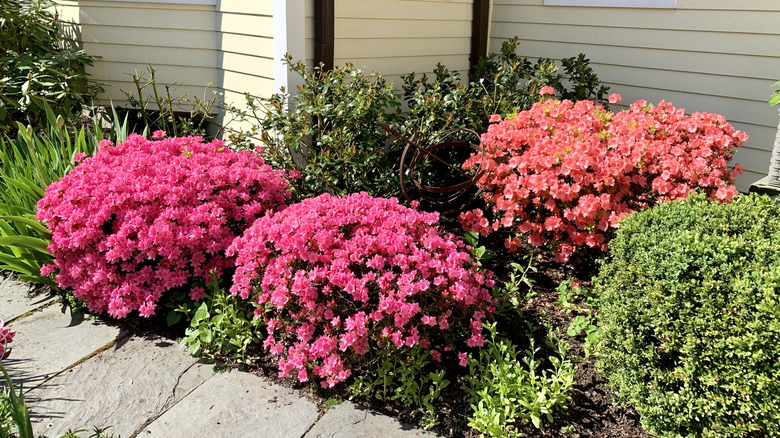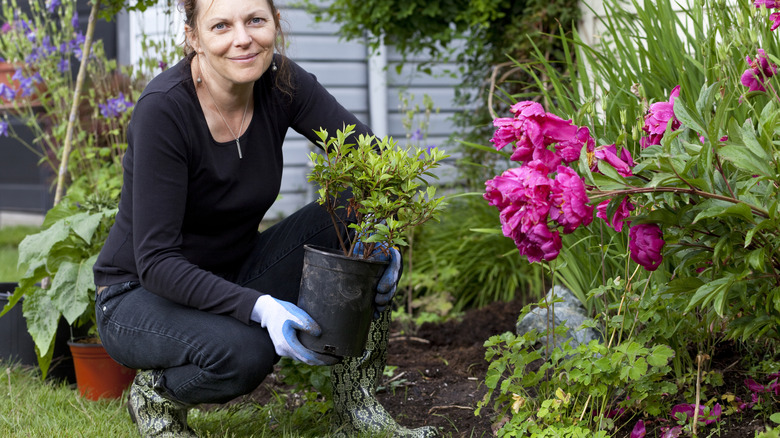The Best Time Of Year To Plant Azaleas For Stunning Blooms
Few flowering plants can rival the magnificence of an azalea in full bloom. If grown under optimum conditions, this unassuming shrub at other times of the year, will suddenly burst into vibrant color as the flowers cover the entire plant in spring. This is one of the reasons why azaleas are the ultimate companion plants for spring bulbs. But to achieve the most eye-catching display of stunning blooms, you'll want to know the best time of year to plant azaleas in your yard. Essentially, potted shrubs can be planted at any time, but you'll have the greatest success if you plant them in the fall.
While it's common for gardeners to purchase container-grown azaleas in spring to plant into their yards because they're already in bloom, they do need a little extra care when planted at this time of the year. This care involves keeping the plants well-watered to allow them to become established prior to summer's heat. They'll also need to be sheltered from the harsh afternoon sun to stop the leaves from getting scorched. When planting your azalea, pay particular attention to the soil because these plants prefer it on the acidic side and need it to be well-drained. You'll also be pleased to know that azaleas can add color to your garden with a sweet flower that hummingbirds and cardinals love.
Why planting azaleas in the fall is better
There are numerous varieties of azaleas you can grow in your garden. While many are deciduous, there are also plenty that are evergreen. Nevertheless, these plants all go dormant over winter, so planting them in the fall places less stress on the azalea itself, thanks to the cooler temperatures. As the plant starts to go into dormancy, its energy can be diverted away from the top growth into establishing a solid root system. These roots will continue to grow through the colder months, even though the plant is not actively growing above the ground.
This means that by the time spring comes around again, your azalea will be well-established and have the capacity to put on a spectacular display of blooms. Before you place your azalea in its freshly dug hole, make sure you inspect the root ball. If the plant has been in the container for a while, it may have become pot-bound. If you notice circling roots and lots of fibrous ones near the top, take a sharp knife and make a few vertical cuts around all sides of the root ball to loosen it up. Gently pull the loosened roots outward and spread them as you place your azalea in the planting hole. This will help to stimulate new root growth and allow your plant to settle more easily into its new home. Once it's thriving, you'll also want to know the best time of year to prune azaleas for those stunning blooms.

